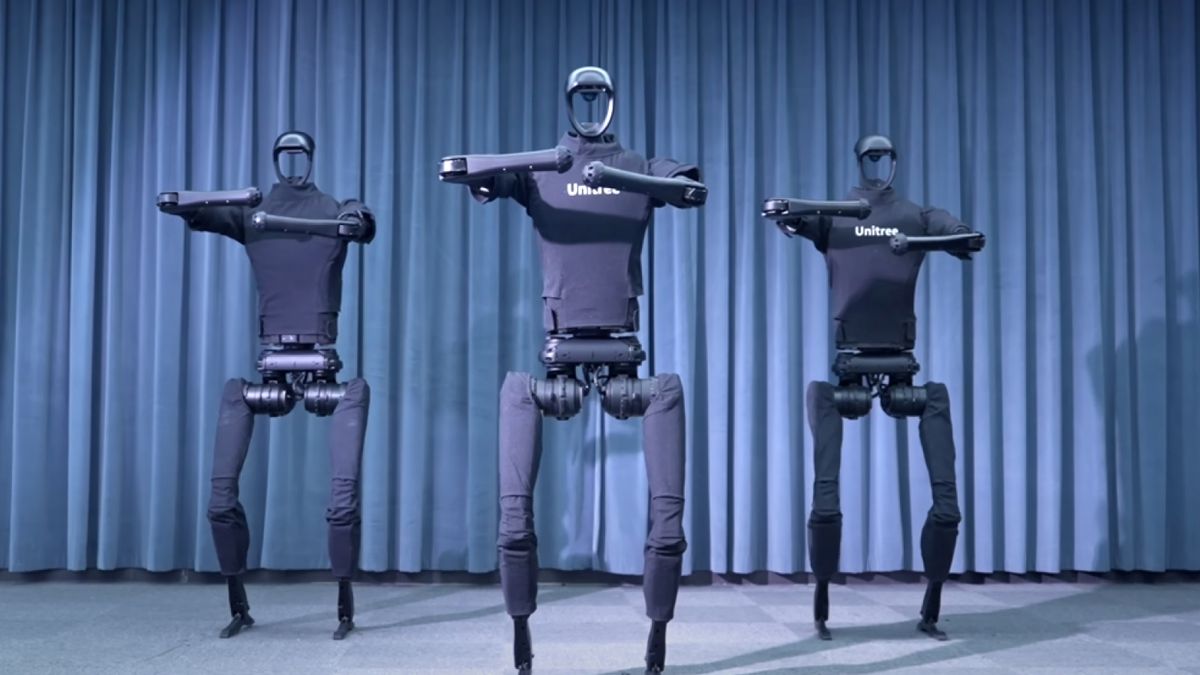A Chinese bipedal robot has set a new world speed record for a humanoid robot — and can maintain its balance when knocked off course.
The newest version of Unitree’s H1 robot, called “Evolution V3.0”, is a bipedal robot that stands a little over 5 foot 11 inches (1.8 meters) tall and weighs less than 110 pounds (50 kilograms).
In a video released March 1, the H1 is seen walking at its maximum speed of 7.4 miles per hour (3.3 meters per second) — its most arresting feature — although the company claimed it can potentially reach a speed of 11 mph (5 m/s).
In a previous video, released in August 2023, a Unitree engineer attempts to tip the robot over by kicking it forcefully. But the H1 recovers with ease, adjusting its footing to recenter its weight like a person would thanks to three degrees of freedom in the hips and one each in the knees and ankles.
In the new video, it can also climb a staircase with aplomb, walking up, turning and climbing back down forwards, as well as navigating a set of steps backward and sideways.
Related: Forget making coffee — Boston Dynamics puts Atlas to work lifting heavy automotive struts in latest flex
Looking like an extremely careful (or tipsy) human being, H1’s sensor array, on top of its trunk, comprises a small ring with sensors and cameras affixed along its upper surface, resembling an extremely small head. Dressed in a Unitree sweatshirt and leg coverings that look like jogging pants, the entire combination places H1 firmly into the uncanny valley.
Unitree claimed the world record for H1 despite Agility Robotics’ Cassie robot managing to run a 100-meter sprint in 24.73 seconds — at 9 mph (4 m/s).
But Cassie is little more than a pair of legs and a small drive module, so it cannot be considered fully humanoid like the H1 robot, or other machines like the Optimus Gen-2 or Figure 01 robots. By contrast, Boston Dynamics’ Big Dog travels at around 1.7 m/s.
H1 navigates using 3D LIDAR technology to constantly map its surroundings in 360 degrees while using a front-facing visual depth camera to judge distances. The joints that make up the hip or pelvis area — to which its legs are fixed — provide a maximum torque of 360 newton-metre (Nm), which gives the system the means to swing its legs back and forth faster. That’s compared to a train, which has around 40,000Nm, and GMC’s Hummer EV, which has a little over 15,000Nm.
As Unitree’s promotional video says, the company wants to get together with robots to win “a new industrial revolution”.


